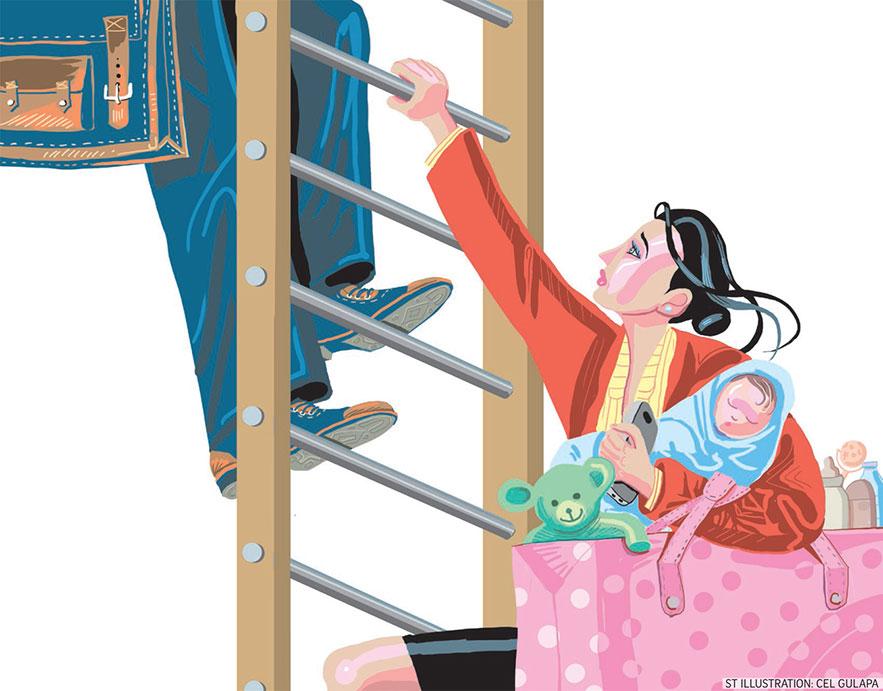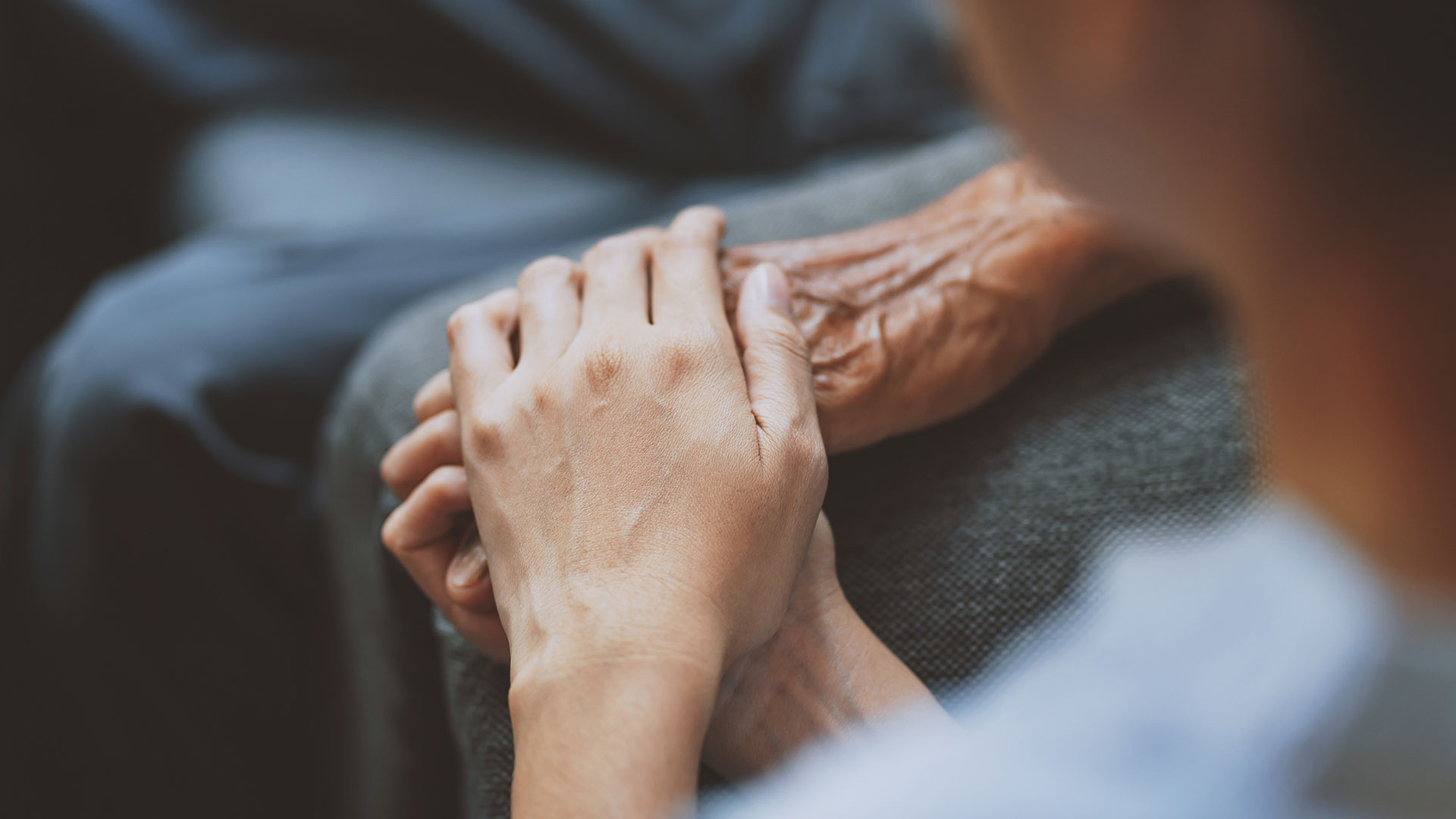It took Singapore less than 50 years to transform itself from a Third to a First World country. From 1965 to 2018, its gross domestic product (GDP) rose by 125 times to become the third richest country in the world.
Last year, it was declared the world's most open and competitive economy. Also in 2019, it clinched the top spot to become the country with the highest average life expectancy in the world.
I could proudly list many other firsts for Singapore, but I hang my head when I look at its ranking in the Global Gender Gap (GGG) report of the World Economic Forum.
The index benchmarks national gender gaps on economic, education, health and political criteria. Singapore stands at No. 54 in the GGG report 2020.
Of course, matters have improved somewhat and we have jumped 13 places since 2018, but if things go on at this pace, it will take more than 100 years to achieve gender equality. What a shame considering our premier status in most other rankings.
Can we wait that long and what signal are we sending to the younger generation and to the world? That gender equality is not very important in our meritocratic society. Is that the kind of Singapore we aspire to?
Let us look at the economic area where there is a significant gender gap. This gap is not due to lack of education or skills in our girls and women, but due to the unequal burden of caregiving.
In Singapore, women, just like men, work to put food on the table and pay for household expenses. Some 61 per cent of women are in the workforce, compared with 76.5 per cent of men.
When it comes to gender equality in the workplace, the city-state still has a long way to go.
According to research by the McKinsey Global Institute (MGI), the gap between men and women in labour-force participation narrows to parity in the 25-to-29 age group, but widens from age 30 onwards.
From this age and beyond, there is a steeper rate of decline in the female-to-male participation ratio, compared with other advanced economies.

ST ILLUSTRATION: CEL GULAPA
At the same time, it pointed out that Singaporean women are more likely to work part time - not necessarily by choice.
By closing this gap, MGI estimates more than $26 billion could be added to Singapore's annual GDP by 2025, or 5 per cent above business-as-usual GDP.
The unequal division in caregiving responsibilities between men and women is one of the most significant factors leading to gender inequality and creates challenges in efforts to narrow the gap.
In 2018, as in past years, family responsibilities (41 per cent) was the top reason women gave for staying out of the labour force. In contrast, the figure was 3.8 per cent for men.
It is women who are the primary providers of care and do the lion's share of unpaid care work in society. This is because societal values and behaviours assign to women a disproportionate responsibility for family caregiving.
Increased time spent on caregiving (whether it is for children or caring for older parents and other relatives) results in several changes in caregivers' employment status, ranging from a reduction of working hours to complete withdrawal from the labour force.
Caregiving thus invariably affects women's ability to work and progress up the career ladder.
It was announced recently by the Ministry of Manpower (MOM) that when comparing the median monthly pay between both the genders, women in Singapore earned 16.3 per cent less than men in 2018.
The 16.3 per cent unadjusted pay gap is largely driven by the tendency for men and women to work in different occupations, the study said, as women tend to be in lower-paying jobs compared with men, who continue to be over-represented in higher-paying occupations.
The adjusted pay gap is 6 per cent. This means women get $342 less in median monthly salary than men who are in similar job roles. Meritocracy obviously does not get factored into this equation.
The changes in employment status are accompanied by a loss in personal income and Central Provident Fund (CPF) contributions. Thus older women end up with less savings and smaller CPF balances.
For those over the age of 60, the average female CPF balance is just 69 per cent of the average male balance.
Work-life balance is important for all workers. But as women here are increasingly setting their sights on success, many are still struggling to find the right balance between work and family.
Can we begin to close the caregiving gender gap?
There are some practical and doable steps we can take in Singapore so that we don't have to wait one whole century for gender equality.
Singapore could run public-awareness campaigns to foster recognition and redistribution of unpaid care work.
The gratification one can get from caregiving is missed out by men who may also want to take part in this very essential role of life. Hence, it is important to change the gendered social attitudes towards caregiving.
Another way is to include gender equality/shared caregiving responsibility concepts into the school curriculum right from the start and beginning in kindergarten as this will change the awareness of young Singaporeans.
Singapore could also increase and redesign work arrangements to accommodate caregiving.
It could increase the availability of flexitime and teleworking options for full-time workers and even allow employees the legal right to request flexible work arrangements.
Only 47 per cent of firms in Singapore offer full-time flexibility. But at this juncture, the Covid-19 epidemic has forced many more employers to adopt the work-from-home option for their employees. The virus has succeeded where many caregivers' requests previously failed.
One other way forward is to expand leave options to include family sick leave and elderly-care leave. Make parental leave policies more gender-balanced and introduce a father's quota.
Also needed are programmes to ease the transition for mothers to return to work. Employers should ensure that wages are determined solely by performance - companies could audit employee pay to identify gender wage gaps in similar roles and create programmes to close them.
The Government could create an equal remuneration clause for men and women to hold corporations accountable.
Work-life balance is important for all workers. But as women here are increasingly setting their sights on success, many are still struggling to find the right balance between work and family.
Singapore regularly ranks as one of Asia's worst countries in terms of this balance, and experts cite that as one reason for its declining birth rate.
Gender equality in Singapore took a giant leap forward in 1961 when the Women's Charter was enacted, giving husband and wife equal status in marriage and outlawing polygamy.
The principle of equal rights enshrined in the Women's Charter frames marriage as "the equal cooperative partnership of different kinds of efforts for the mutual well-being of the spouses".
It was a remarkable progressive law and hailed at that time as a major advance in social legislation, not only in the country, but also in South-east Asia.
We need to take another giant step forward towards gender equality by creating a cooperative partnership for caregiving, among the state, community and men and women, so that there is mutual well-being and economic security for all its citizens.
Women should shoulder only half the sky of caregiving.
Dr Kanwaljit Soin is an orthopaedic and hand surgeon, a former Nominated Member of Parliament and a campaigner dedicated to improving the lives of women.
This article is produced in partnership with ST Life.
